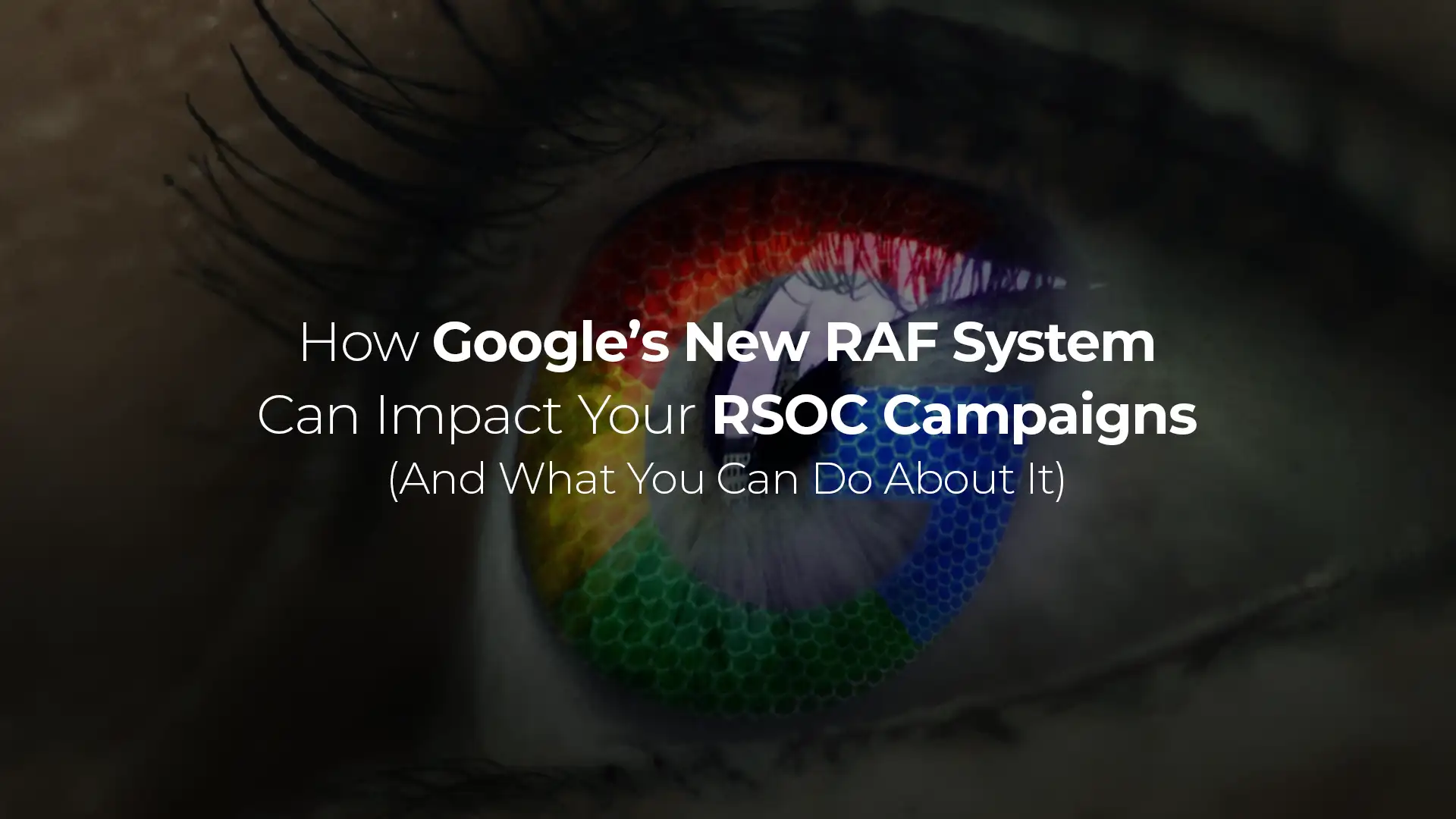
How Google’s New RAF System Can Impact Your RSOC Campaigns
(And What You Can Do About It)
If you’re thriving with RSOC (Related Search On Content), then brace yourself: Google AdSense is rolling out one of the most significant updates in years – the Restricted Access Features (RAFs) system.
From August 25, 2025, advanced tools used in AdSense for Search will become restricted, available only to publishers who pass new eligibility and policy standards. This blog dives deep into what RAFs are, how they impact RSOC strategies, and how to safeguard your monetization efforts moving forward.
What Are RAFs, Exactly?
RAFs are a set of advanced tools within Google AdSense for Search (AFS) that allow publishers to customize Related Search Units, improve ad targeting with data reporting, and scale monetization strategies with greater design freedom.
Until now, these features were broadly available. However, as of August 25, only select publishers will retain access. Everyone else? They’ll be downgraded to a limited version of AFS, stripping away important RSOC tools.
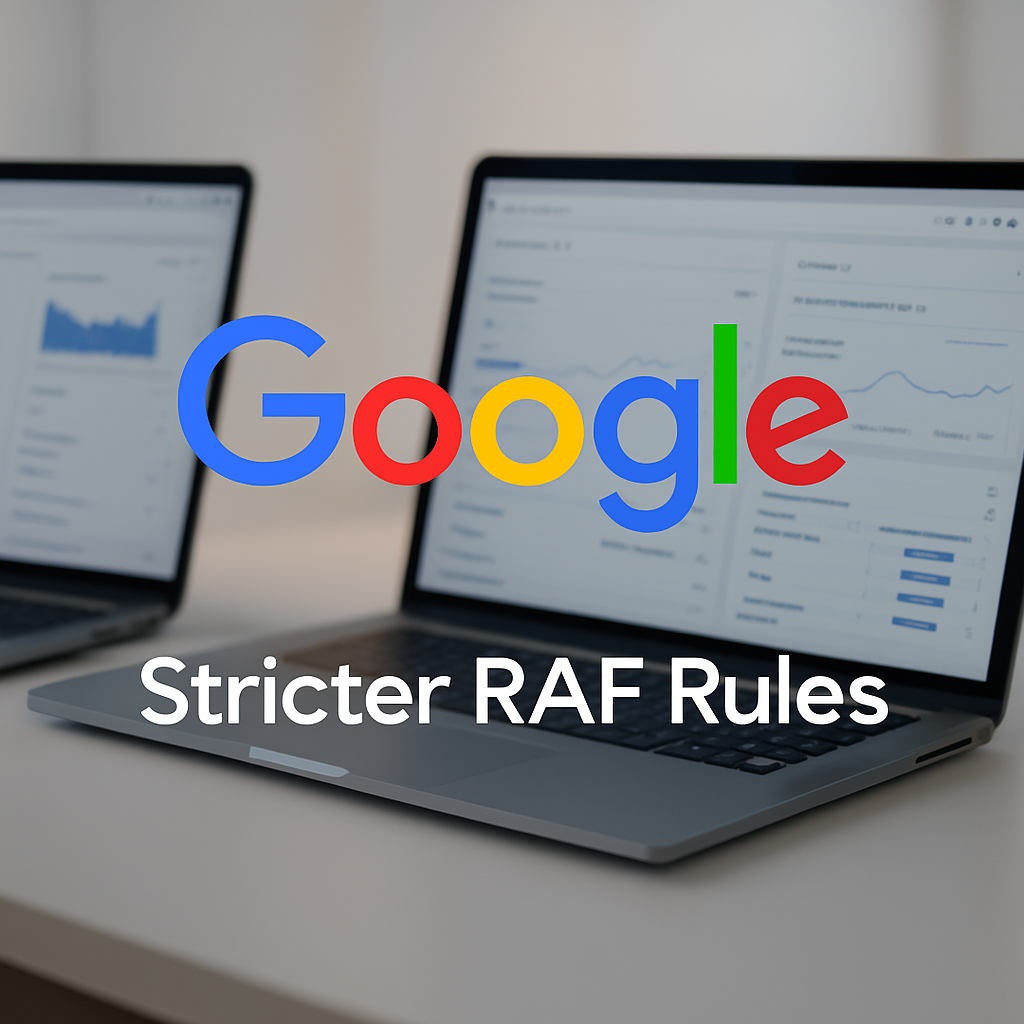
Why Should RSOC Publishers Care?
If you’re running RSOC campaigns, meaning you rely on Related Search ads as a performance channel, this update directly affects your ad visibility, CTR (click-through rate), RPV (revenue per visitor), A/B testing, and optimization flexibility.
What’s Included in RAFs?
According to Google’s policy page, RAFs include the following:
- Related Search Units – Customizable units that drive ad engagement via relevant queries
- Partner-Provided Terms – Use your own curated search terms instead of relying solely on Google-generated suggestions
- Style Customization – Control font, size, color, padding, and icons for better UX
- Multiple Units per Page – Test different placements for higher RPM
- 500+ Reporting Channels – Deep analytics to track what’s working
- Click Tracking – Attribute conversions and engagement to specific units
Without RAFs, you have only a basic version, a single Related Search unit, limited styling, only five Google-suggested terms, and little data transparency.
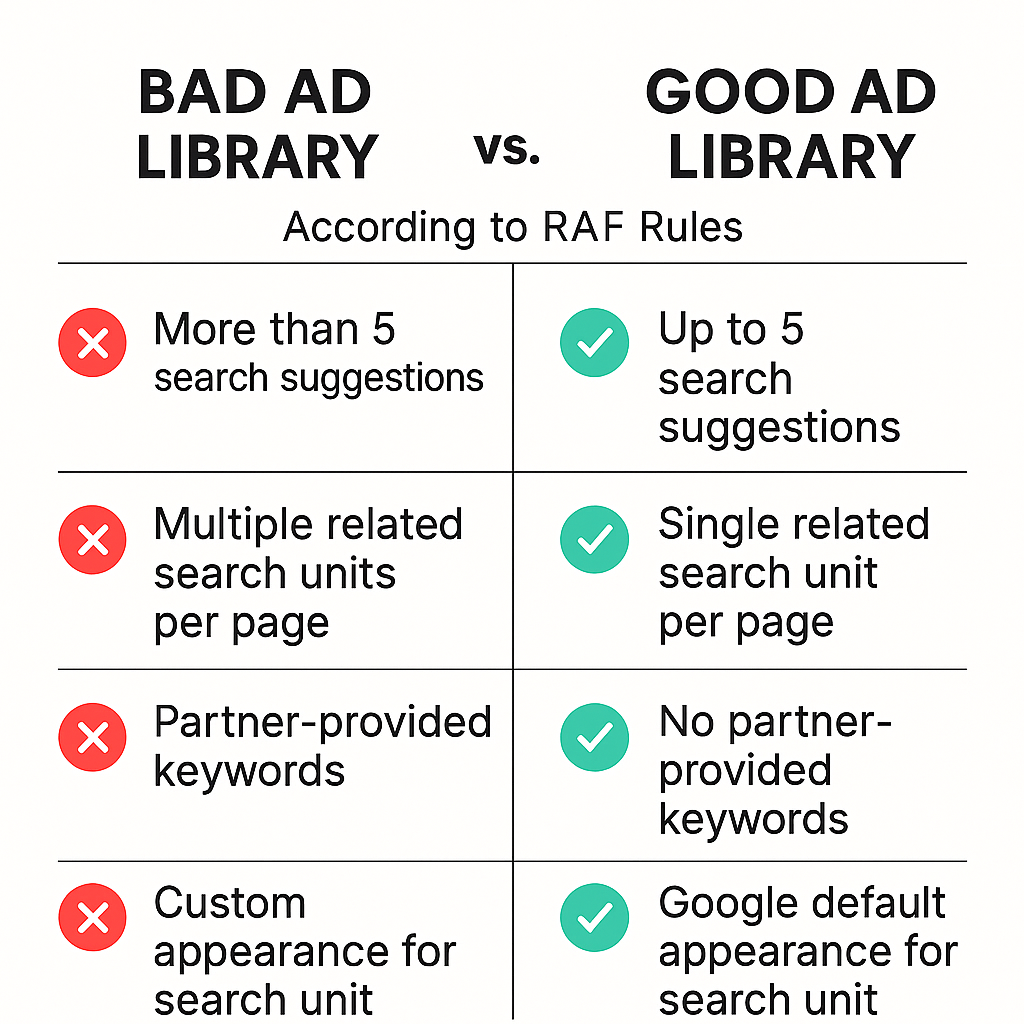
The Strike System: How You Can Lose RAFs
RAFs come with a zero-tolerance enforcement model.
Google is introducing a strike-based compliance system and policy rules. Here’s how it works:
1. What Counts as a Violation?
- Publishing misleading content to increase clicks (e.g. “Claim Your Prize!”)
- Designing pages to disguise ads as native content
- Using false search prompts (e.g., autofill-like fake input fields)
- Providing inaccurate referrer ad creative info (especially in RS feeds)
2. How Strikes Work:
Strike 1: You are on probation for 90 days, but you keep RAF access.
Strike 2: You’re restricted for 90 days and RAFs are disabled.
Strike 3: You get a permanent RAF ban, there is no option to appeal or reset.
Even one violation can result in a getting instant strike.
There is an option to the counter reset if you are able to avoid a new strike for two years. But if you get a full ban, that is permanent, and there is no going back.
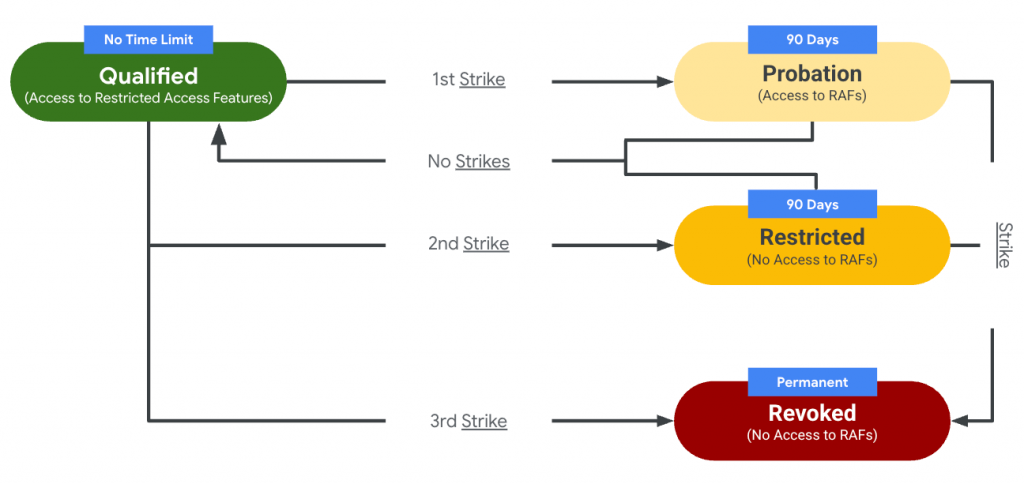
Real-World Impact: RSOC Publishers on the Line
Let’s say you’re a publisher running a high-performing RSOC campaign with the following setup:
- Multiple Related Search units per page
- Custom queries related to high-intent verticals (e.g., “Best car insurance 2025”)
- Branded styling with large fonts and icons
- Dynamic A/B testing based on click data from reporting channels
With RAFs enabled, you’re in control.
But if you lose RAF access:
- You’re limited to 1 RS unit per page
- No more A/B tests
- Your custom query funnel disappears
- You can’t view deep data insights
- Click-through rate drops
- Monetization tanks
Even worse, rebuilding performance becomes nearly impossible without the tools that got you there in the first place.
How Google’s RAF Policy Will Impact RSOC Campaign Runners
If you’re running RSOC campaigns, Google’s new RAF policy is going to change how you work, optimize, and scale. Starting August 25, 2025, this policy will limit access to key features unless you meet specific eligibility and compliance standards.
Here’s how that will impact your campaigns:
1. Your Campaign Flexibility Will Be Reduced Without RAF Access
Most RSOC campaigns rely on customization and scale to perform well. Without RAF access, you lose the ability to customize your search units, the option to show more than 5 suggested queries, the ability to place multiple search units per page, partner-provided keywords, advanced reporting and click-tracking granularity to measure ad performance
Without these tools, your RSOC funnel becomes less optimized, making it harder to improve CTR, bounce rate, and monetization performance.
2. You Risk Losing Access Permanently If You Get Strikes
Google is introducing a strike-based enforcement system. If you violate their “in-scope” content rules, you can get 1st strike (90 days probation), 2nd strike (90 days restriction) and 3rd strike (permanent ban from RAFs).
One serious violation can trigger a strike instantly. And once you lose RAF access, you cannot reapply or recover it. This creates long-term damage to your RSOC strategy.
3. A/B Testing and Scaling Will Be Limited
RSOC success often comes from testing different queries, optimizing styling and segmenting users and placements.
But all of that depends on RAF-enabled features. Without them, your optimization strategy is less measurable, harder to test and visually limited. All this results in your campaign being static.
4. Your Revenue Per Page (RPM) Will Likely Decrease
Without custom styling, optimized placements, and smart targeting via partner-supplied terms, RSOC campaigns lose their edge. You may see lower ad engagement, fewer qualified clicks, reduced ad fill or relevance and decreased RPM and total earnings.
Many high-volume RSOC publishers estimate that losing RAF features could cut 30–60% of their revenue from those pages.
5. If You’re Compliant – You’re In a Stronger Position
If you request RAF access early, follow policy guidelines, and maintain a clean account, you’ll benefit from access to all advanced RSOC tools. Less competition from low-quality players who get restricted, better performance tracking, scalability, and monetization and confidence that your monetization model is future-proof.
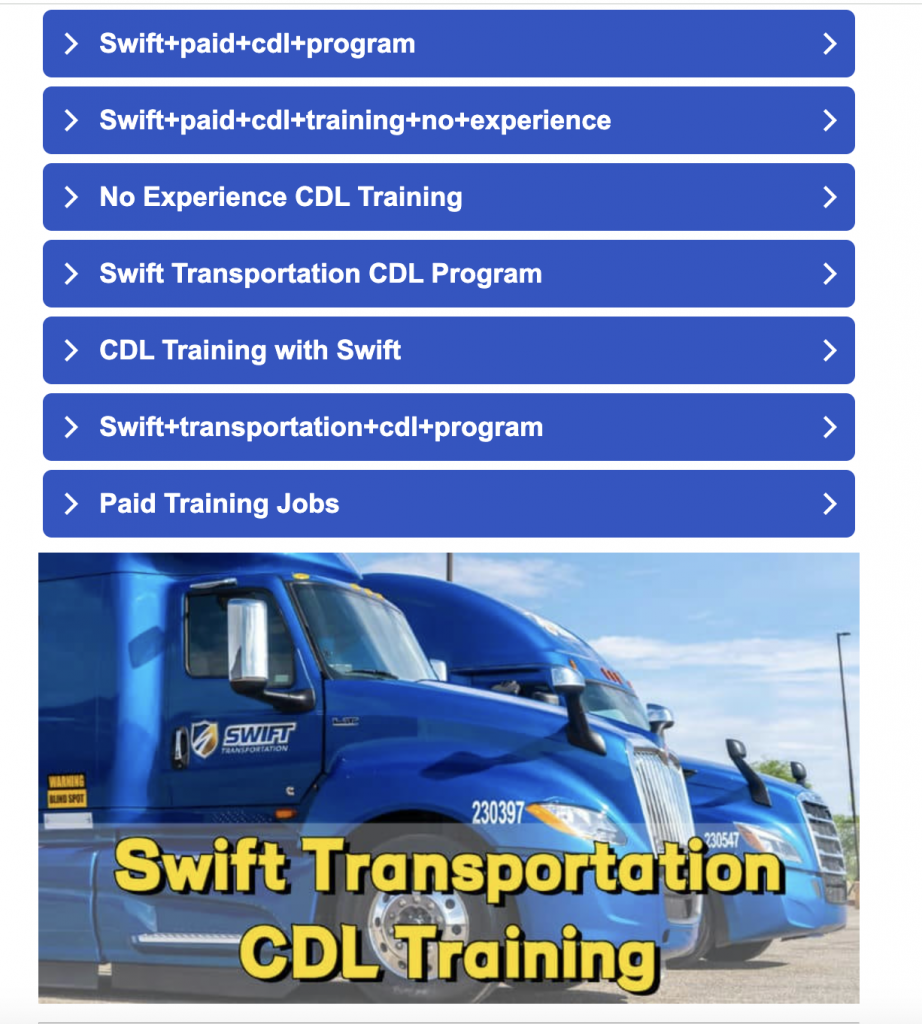
How to Stay RAF-Eligible: 6 Key Steps
1. Get Invited
You need an invite from your Google AdSense account manager. This isn’t automated; you must request access.
2. Clean Up In-Scope Violations
Use AdSense’s Policy Center to find and fix any violations. Check especially for:
- Misleading layouts
- Incorrect search prompts
- Incomplete referral Ad Creative tags
3. Align With Google’s RS Guidelines
Follow this official guide on how to implement RS properly. Key points include:
- Use accurate search terms
- Label ads clearly
- Avoid spammy UX
4. Review Your Reporting Practices
Make sure you’re not manipulating click reporting or hiding user intent. Transparency is essential.
5. Appeal If Needed
You can appeal violations, and a successful appeal can remove a strike from your record.
6. Future-Proof Your Strategy
- Add content depth to your pages to ensure ads are contextually anchored
- Reduce reliance on manipulative call-to-actions
- Use compliant layouts (clear fonts, visible labels)
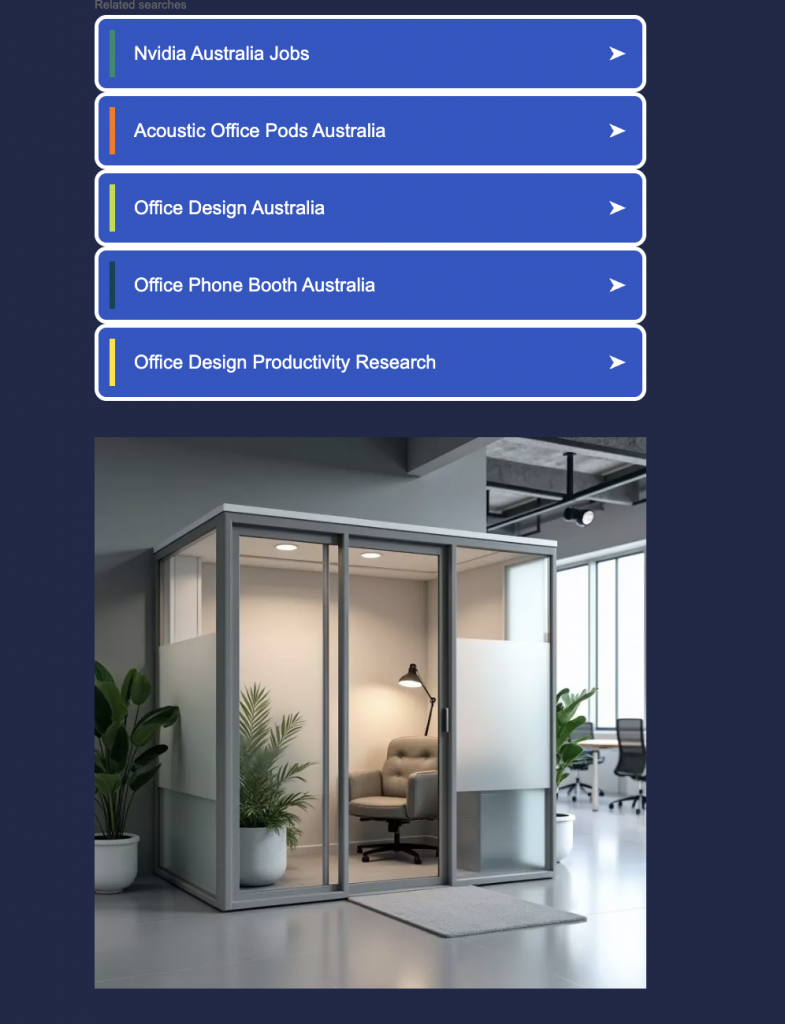
Industry Reaction: Networks Are Already Adjusting to RAF
Some of Google’s major search and arbitrage partners are already adapting their workflows in anticipation of RAF enforcement. For exampl, they are implementing a mandatory creative pre-approval process starting July 31, 2025, with these key changes:
- All creatives must be pre-approved before they can trigger the keyword widget
- Unapproved ads won’t generate RS units, meaning lost monetization
- Facebook ads now require:
- API-based integration
- Specific naming conventions
- Campaign URL tagging
- Email alerts for approval status
The era of open creative testing is ending. Compliance, transparency, and standardization are now mandatory.
Timeline To Remember
- July 2025 → RAF system introduced publicly
- August 25, 2025 → Enforcement begins
- Ongoing → Invitations to RAF eligibility roll out via AdSense account managers
Final Advice and Thoughts
If you’re serious about RSOC monetization, this is a wake-up call to audit your pages for policy violations, request RAF access from your AdSense account manager, remove misleading content, elements, or prompts and focus on user value and transparency.
RAF is Google’s way of approving only quality-driven, compliant publishers that will continue to thrive.
This is a fundamental shift in how Google wants RSOC to work.
If you’re building sustainable monetization via Related Search, RAFs are your new gatekeepers. Without them, even the best strategy will struggle. With them, you unlock greater control, smarter data, and higher long-term revenue.
But that control comes with responsibility. Think of RAFs like a premium license: they let you drive faster, but only if you follow the rules.
